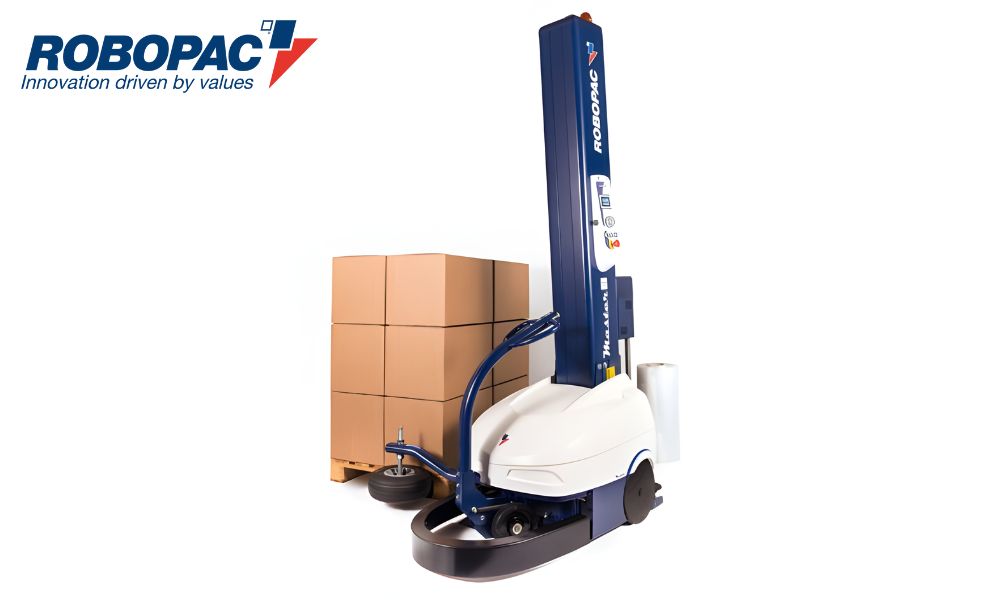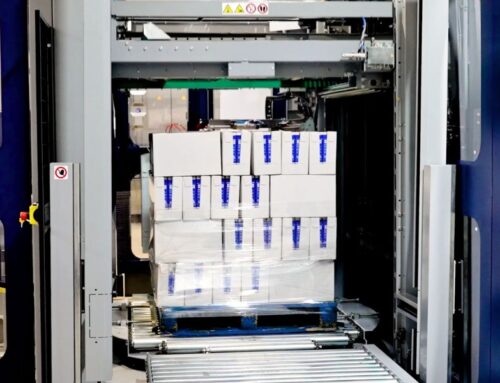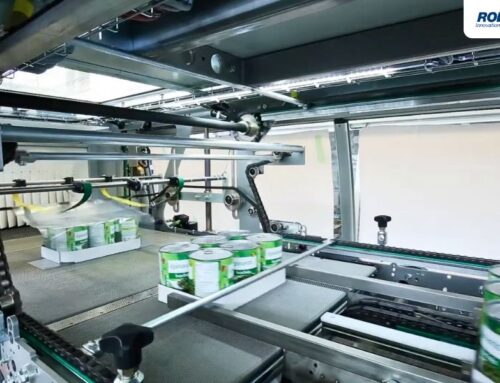A stretch wrapper is an effective machine for securing pallet loads, using stretch film to stabilize products for transport and storage. This equipment plays a critical role in logistics by protecting goods from damage, dust, and moisture.
When selecting a machine, businesses must choose between semi-automatic and automatic models. In this guide, we’ll outline what auto and semi-auto stretch wrapping machines bring to the table and their differences.
Semi-Automatic Stretch Wrappers
A semi-automatic stretch wrapper needs an operator to manage parts of the process. Typically, a worker uses a forklift or pallet jack to place the pallet onto the machine or in the wrap zone on the floor. The operator then attaches the film and starts the wrapping cycle by pushing a button. Advanced semiautomatic stretch wrappers feature a cut-and-clamp device holding the film and a remote control to start the wrap cycle, allowing the forklift operator to stay on the forklift. After completing the wrapping, in most cases the operator cuts the film and removes the load.
These machines offer flexibility and are cost-effective choices for smaller businesses or those with low-volume packaging needs. Semiautomatic stretch wrapper are typically for operations that wrap 40 or fewer pallets per hour. They work well for operations that handle varying load sizes and do not require high-speed, continuous output.
Automatic Stretch Wrappers
An automatic stretch wrapper works without manual intervention. They come in turntable, rotary arm, rotary ring, and horizontal models. They can be stand-alone or integrated into a packaging line with a conveyor. These machines handle the entire process from start to finish. The system automatically moves a pallet into the wrapping zone, applies the film, cuts it, and then sends the load down the conveyor line.
This hands-free operation makes automatic wrappers ideal for high-volume environments where speed and consistency are a priority. They are specifically built for companies that wrap from 40 up to 200 pallets per hour. They boost efficiency and reduce labor requirements, which saves time and money in large-scale facilities.
Key Differences To Consider
Now that we understand auto and semi-auto stretch wrapping machines, what are their differences? The key distinctions of these stretch wrappers are their wrapping volume, speed, labor requirements, and costs.
Volume and Speed
The most significant difference between these machines is the volume of pallets each can handle. Automatic systems prioritize speed and can process a continuous flow of pallets, making them perfect for high-throughput operations. Semi-automatic wrappers are slower and better for lower-volume needs where speed is not the primary concern.
Labor and Cost
Automatic wrappers have a higher initial investment cost, but they reduce long-term labor expenses because they do not need an operator. Semiautomatic machines are more affordable upfront, but in most cases, they require an employee to manage loading, starting, and unloading. The choice depends on balancing your initial budget with ongoing operational costs.
Which is Right for Your Packaging Process?
Determining the ideal stretch wrapping equipment will ultimately depend on your specific needs, budget, and goals. Consider factors such as production volume, speed requirements, and labor costs when evaluating which type of wrapping machine will best suit your packaging process.
For companies with high volume and fast-paced production environments, investing in automatic wrappers can reduce labor expenses and increase efficiency. On the other hand, semi-automatic machines may be a more practical choice for those with lower volume needs or budget constraints.
Find Auto & Semi-Auto Solutions at Robopac USA
Choosing the right stretch wrapper depends on your specific production demands. However, whichever you decide is right for you, Robopac USA has the premium stretch wrappers to optimize your secondary packaging needs. For more guidance, contact Robopac USA, and our expert team will help you decide which is right for you!







